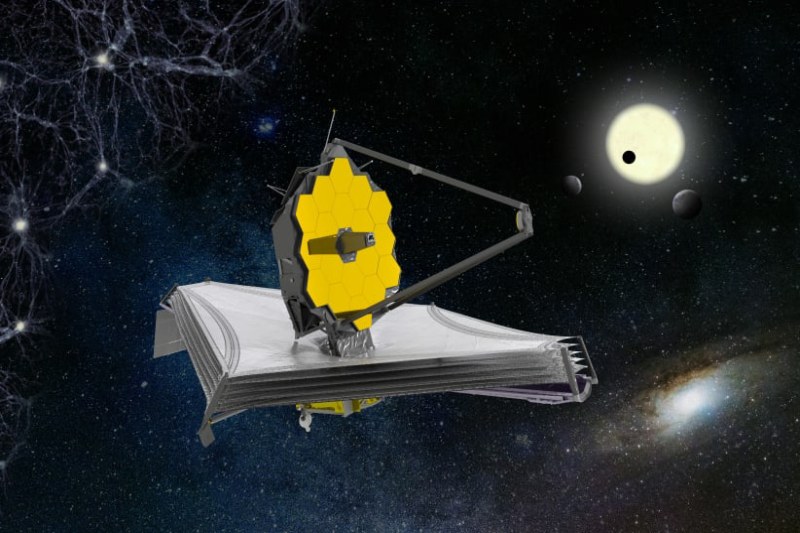Neptune’s Past is Revealed by Icy Asteroids with the James Webb Space Telescope

Through its study of two icy asteroids near the solar system’s edge, the James Webb Space Telescope is providing scientists with valuable insights on the evolution of Neptune, an ice giant. These discoveries may also shed light on how water, an essential component for the eventual genesis of life, became saturated in early Earth.
It was recently found that the binary asteroid system Mors-Somnus formed amid an icy region of objects commonly referred to as “the Kuiper Belt.” This area is located outside of Neptune’s orbit, which is the eighth and farthest planet from the sun. Therefore, Mors-Somnus can be utilized as a stand-in for studying the dynamic history of trans-Neptunian objects (TNOs), or other icy things in the Kuiper Belt, in addition to Neptune.
While the surface compositions of two parts of a small, binary pair of TNOs have previously been studied in detail, this research—conducted as part of the Surface Compositions of Trans-Neptunian Objects (Disco-TNOs) program of the James Webb Space Telescope—represents the first such investigation of a smaller TNO. Consequently, their chemical compositions have likewise never been disclosed before.
“We are studying how the actual chemistry and physics of the TNOs reflect the distribution of molecules based on carbon, oxygen, nitrogen and hydrogen in the cloud that gave birth to the planets, their moons, and the small bodies,” Ana Carolina de Souza Feliciano, research leader and Disco-TNOs program scientist at the Florida Space Institute, said in a statement. “These molecules were also the origin of life and water on Earth.”
Mors-Somnus and other binaries are uncommon discoveries outside the Kuiper Belt. This is due to the fact that when such far-off binaries are not shielded by other ice bodies and belt pieces, their gravitational tie is broken. This suggests to the scientists that Mors-Somnus’s current location outside of the Kuiper Belt was likely reached via a very arduous journey.
By comparing the surface of Mors-Somnus to the surfaces of six other undisturbed TNOs, or “cold classical” ones, De Souza Feliciano and colleagues found that there are a lot of similarities between them using the JWST. This demonstrated that the asteroids Mors and Somnus, as well as these frigid, classical rocks, all formed in the same Kuiper Belt region approximately 2.7 billion miles away. It is believed that additional TNOs have arisen in this area as well.
Moreover, the apparent disturbance of these bodies from their initial locations in the Kuiper Belt allows scientists to contrast them with undisturbed cold classical TNOs, perhaps tracing Neptune’s migration path to its present orbit.
When the Disco-TNOs data of about 60 TNOs began to arrive from the JWST in late 2022, these are precisely the kinds of findings that the researchers were expected to discover.
“As we started to analyze the Mors and Somnus spectra, more data were arriving, and the connection between the dynamic groups and compositional behavior was natural,” de Souza Feliciano stated.
The Disco-TNOs program was created by research co-leader and Florida Space Institute researcher Noemí Pinilla-Alonso. She thinks the JWST will eventually provide even more information on objects in the Kuiper Belt and even beyond Neptune because of its unparalleled spectral observation capabilities.
“For the first time, we can not only resolve images of systems with multiple components, but we can also study their composition with a level of detail that only the JWST can provide,” Pinilla-Alonso said. “We can now investigate the formation process of these binaries like never before.”
Despite the fact that the JWST was intended to observe things that are billions of light-years distant from Earth, such as galaxies and quasars, de Souza Feliciano feels that this finding highlights how the JWST is a genuine trailblazer.
“Before JWST, there was no instrument able to obtain information from these objects in that wavelength range,” she stated. “I feel happy to be able to participate in the era inaugurated by the JWST.”